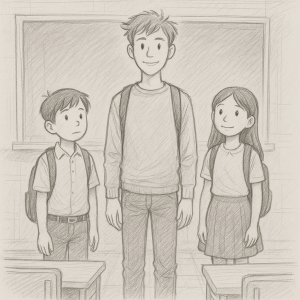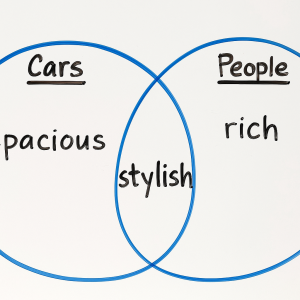Here are some tried-and-tested comparative activities for practising both comparatives and superlatives in a fun, meaningful way. Most of these require minimal prep and work well in pairs or small groups
Comparative Pairs

Put students into pairs and have them find out enough about each other to write five comparisons using the comparative form.
Sheila is taller than me
My bag is bigger than Sheila’s bag
Superlative Group Sentences
Put students into groups of three. Their task: create five superlative-based sentence sets using comparisons between all group members.
Jean is taller than Stephan, but Ulrike is the tallest.
Tiago has more cats than Thibeau, but Dapo has the most cats
Dice Comparisons
This is one of my favourite comparative activities — it’s simple to run and gets students speaking naturally.Decide on a category of objects which contains suitably varied items such as cars, animals, cities.
Step 1: Choose a category
Use something with varied features like cities, animals, or vehicles.
Step 2: Brainstorm adjectives
For example, if your category is cities, you might elicit:
hot, cold, crowded, expensive, touristy, clean, polluted, rainy, beautiful
Write these on the board.
Step 3: List six examples
Number six notable items in the category. For cities:
- New York
- Dubai
- Venice
- Tokyo
- Dublin
- Buenos Aires
Step 4: Roll and compare
In pairs or small groups, students roll the dice twice and compare the two results using adjectives from the board.
New York is more expensive than Venice.
Dubai is hotter than Dublin.
They should use the cities in the order they’re rolled to increase challenge and prevent cherry-picking.
Extension: Superlatives
Have students choose their favourite items and make superlative sentences:
Venice is the most beautiful city on the list.
Tokyo is the most exciting place I’ve ever been to.
Make Sentences with Common Adjectives
Give pairs of small groups of students a set of shuffled common adjective cards. As a preliminary exercise you could have them try to find as many pairs of opposites as they can.
Students should now place a pack of the shuffled cards face down on the table and take it in turns to turn over the top card. They should now attempt to make a comparative sentence using the correct selected adjective.
At our online-learning focused platform learnhip.com you can find a set of random common adjectives.
Venn Diagram Adjectives
This is a great comparative/superlative activity for reviewing vocabulary and building category-based thinking.

How it works:
- Choose two categories (e.g. cars and animals).
- Give students a list of adjectives.
- In groups, they sort adjectives into:
- A: applies to only cars
- B: applies to only animals
- AB: applies to both
Then use dice or a spinner to select random items from the categories and compare them using the adjectives.
A cheetah is faster than a motorbike.
An elephant is heavier than a van.
A sports car is the most expensive thing on the list.
